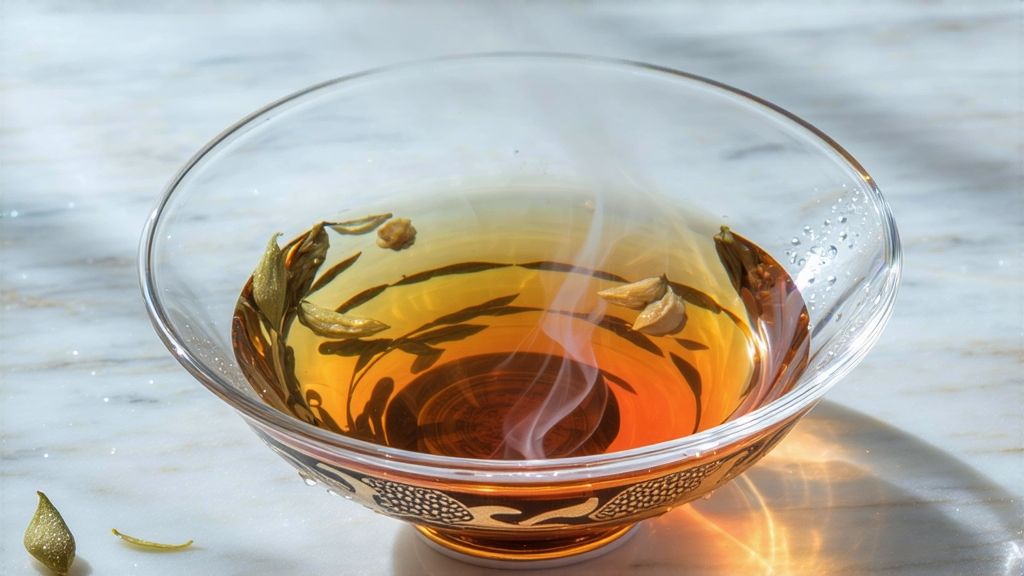
Fuding Silver Needle—Bai Hao Yin Zhen in its native name—has long been the luminous apex of Chinese white tea. International drinkers often meet white tea through bagged blends, yet this single-bud treasure from Fujian’s northern coast offers a far subtler story: one of maritime fog, imperial tribute, and a craft so gentle it feels more like caretaking than manufacture. To understand Silver Needle is to watch daylight slowly tint a pearl; nothing appears to happen, yet everything changes.
History: From Mountain Hermitage to Global Chic
White tea as a style is first mentioned in the Song Dynasty (960-1279), but explicit references to “Yin Zhen” emerge during the early Qing, when Fuding’s Taimu Mountains supplied the Manchu court. Buds were sun-withered, packed in silk, and carried north by horseback; the pale infusion pleased empresses who believed it cooled summer heat without darkening the complexion. Overseas, Silver Needle arrived via pre-war European pharmacies sold as “Chinese Down Tea,” valued for supposed antiseptic virtues. Only after 2003, when the EU lowered pesticide barriers and Chinese exporters shifted from green to white, did it re-enter cafés as a boutique staple. Today Fuding county guards both its Geographical Indication status and the 200-year-old mother trees that still seed new gardens.
Micro-Terroir: Why Fuding Tastes like Morning Mist
The region’s red granitic soils drain quickly, forcing bushes—predominantly Fuding Da Bai Hao cultivars—to send nutrients straight to tender spring tips. A maritime monsoon climate creates 68 % average humidity; ultraviolet light bouncing off the East China Sea is softer than inland provinces, letting amino acids accumulate while polyphenols stay moderate. The result is a buds-only harvest whose downy hairs refract light like frost, carrying a scent uncannily between fresh hay and watermelon rind.
Pluck: One Dawn, One Standard
Authentic Silver Needle is picked only in early-mid March for roughly ten days, before Qingming festival. Two strict rules govern the field: pick when the bud is “fish-hook” curved but not yet open, and never touch iron tools that might bruise enzymes. Experienced pluckers use bamboo baskets lined with palm leaves; a full day’s work yields barely 500 g of fresh buds, which shrink to 100 g after drying. Such parsimony explains cost, yet also guarantees a liquor free of leafy tannin.
Craft: The Art of Doing Almost Nothing
Unlike green tea’s kill-green wok or oolong’s bruising, white tea relies on gradual moisture loss. Fresh buds are first “winded” indoors on reed trays for 26–32 h at 26 °C; ambient airflow oxidises enzymes just enough to convert grassy hexanal into sweet cis-3-hexenol. Next comes a brief sun bath—no more than 20 min—when growers flip buds every 90 s to avoid scorch. The final and most critical step is low-temperature baking at 35–40 °C for six hours, a method locals call “basking in the moon.” The goal is 8 % residual moisture, low enough to store yet high enough to let the tea age. Mis-time any stage and the down darkens, aroma collapses into hay, and export buyers balk.
Aging: When White Becomes Darker, yet Lighter in Taste
Silver Needle belongs to the rare cohort of teas that improve over years if kept dry and oxygen-poor. A 2012 comparative study at Zhejiang University tracked the same batch stored in clay jars, foil bags, and paper boxes. After eight years the jarred sample lost 42 % of its caffeine but gained 300 % of the relaxing compound theogallin, yielding a coppery brew reminiscent of dried apricot and sandalwood. Collectors now buy tongs of 500 g paper-wrapped cakes, labeling them like Burgundy vintages; a 2010 “snow bud” cake recently fetched USD 1,200 at Kuala Lumpur auction.
Grades and Market Reality
Chinese national standard GB/T 22291-2017 divides Silver Needle into three grades—Special, First, and Second—based on bud length, down density, and presence of broken tips. Yet the West rarely sees these labels; instead exporters coin poetic names like “Imperial Needle” or “Moonlight White.” Buyers should watch for uniform ivory color, intact hooks, and a